Numbers and Sequences | Mathematics - Multiple choice questions | 10th Mathematics : UNIT 2 : Numbers and Sequences
Chapter: 10th Mathematics : UNIT 2 : Numbers and Sequences
Multiple choice questions
Multiple choice questions
1. Euclid’s division lemma states that for positive integers a and b, there exist unique integers q and r such that a = bq + r , where r must satisfy.
(1) 1 < r < b
(2) 0 < r < b
(3) 0 ≤ r < b
(4) 0 < r ≤ b
2. Using Euclid’s division lemma, if the cube of any positive integer is divided by 9 then the possible remainders are
(1) 0, 1, 8
(2) 1, 4, 8
(3) 0, 1, 3
(4) 1, 3, 5
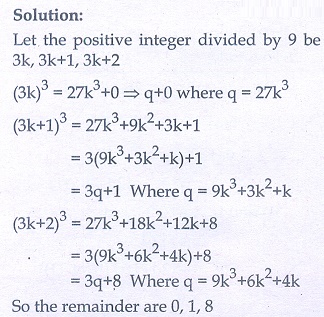
3. If the HCF of 65 and 117 is expressible in the form of 65m -117 , then the value of m is
(1) 4
(2) 2
(3) 1
(4) 3
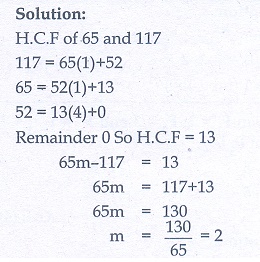
4. The sum of the exponents of the prime factors in the prime factorization of 1729 is
(1) 1
(2) 2
(3) 3
(4) 4

5. The least number that is divisible by all the numbers from 1 to 10 (both inclusive) is
(1) 2025
(2) 5220
(3) 5025
(4) 2520
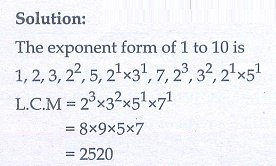
6. 74k ≡ _____ (mod 100)
(1) 1
(2) 2
(3) 3
(4) 4
Solution
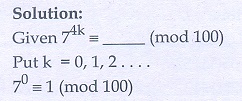
7. Given F1 = 1 , F2 = 3 and Fn = Fn−1 + Fn−2 then F5 is
(1) 3
(2) 5
(3) 8
(4) 11
Solution
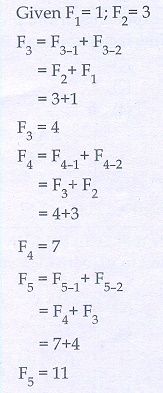
8. The first term of an arithmetic progression is unity and the common difference is 4. Which of the following will be a term of this A.P.
(1) 4551
(2) 10091
(3) 7881
(4) 13531
Solution
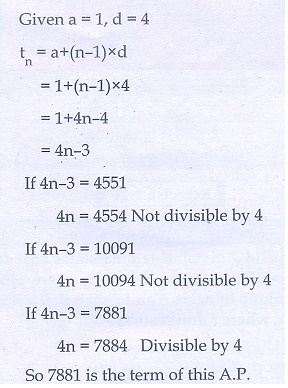
9. If 6 times of 6th term of an A.P. is equal to 7 times the 7th term, then the 13th term of the A.P. is
(1) 0
(2) 6
(3) 7
(4) 13
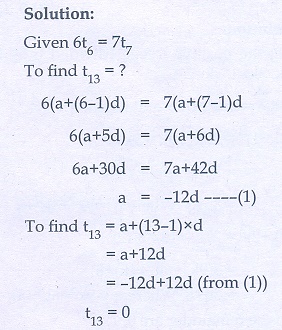
10. An A.P. consists of 31 terms. If its 16th term is m, then the sum of all the terms of this A.P. is
(1) 16 m
(2) 62m
(3) 31m
(4) 31/2 m
Solution
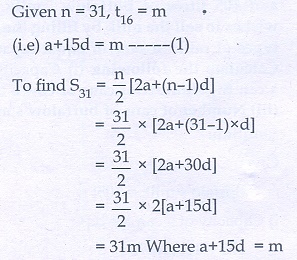
11. In an A.P., the first term is 1 and the common difference is 4. How many terms of the A.P. must be taken for their sum to be equal to 120 ?
(1) 6
(2) 7
(3) 8
(4) 9
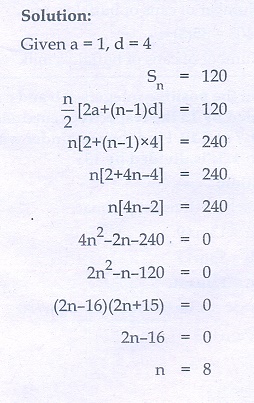
12. If A = 265 and B = 2 64 + 2 63 + 2 62 + … + 20 which of the following is true?
(1) B is 264 more than A
(2) A and B are equal
(3) B is larger than A by 1
(4) A is larger than B by 1
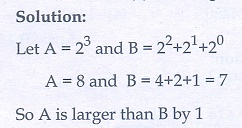
13. The next term of the sequence  is
is
(1) 1/24
(2) 1/27
(3) 2/3
(4) 1/81
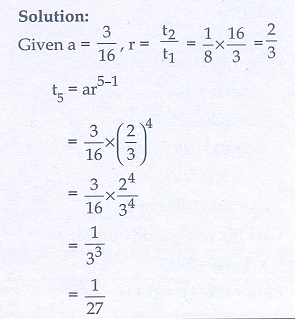
14. If the sequence t1 , t 2,t3,... are in A.P. then the sequence t 6 , t12 , t18,... is
(1) a Geometric Progression
(2) an Arithmetic Progression
(3) neither an Arithmetic Progression nor a Geometric Progression
(4) a constant sequence
15. The value of (13 + 2 3 + 3 3 + + 15 3 ) − (1 + 2 + 3 + + 15) is
(1) 14400
(2) 14200
(3) 14280
(4) 14520
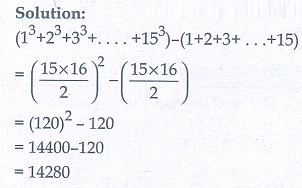
Answers:

Related Topics